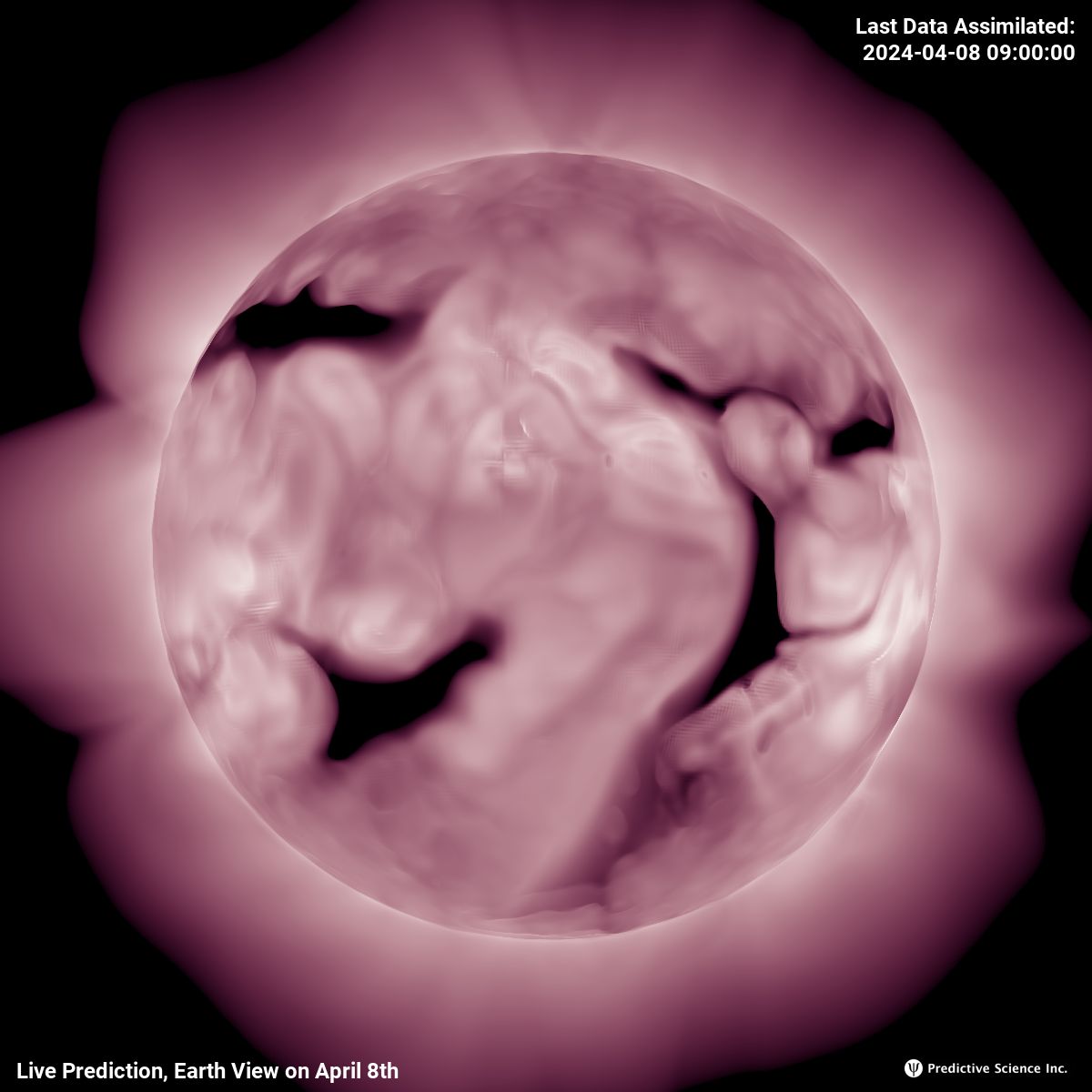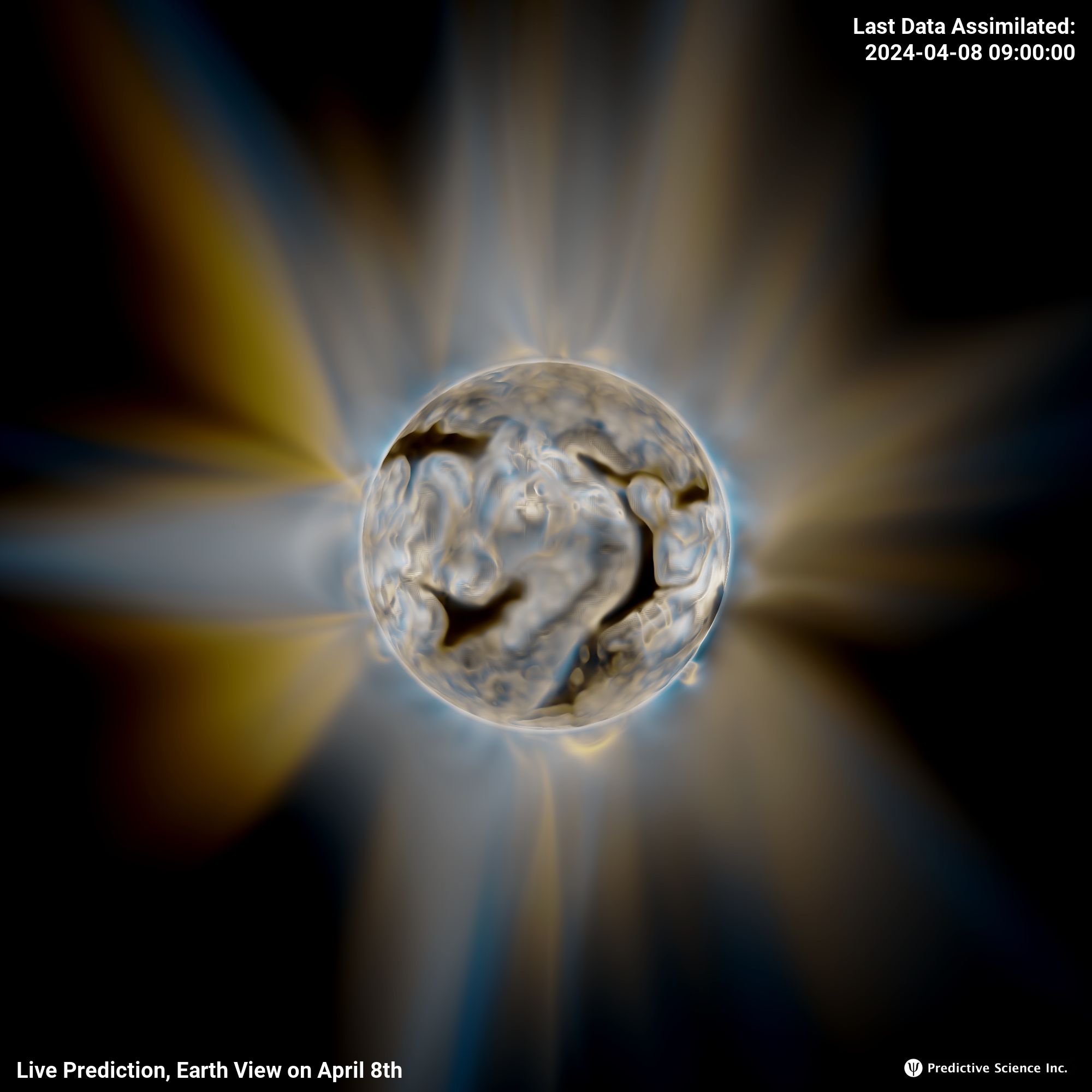EUV 171 Å Emission
(AIA)
EUV 193 Å Emission
(AIA)
EUV 211 Å Emission
(AIA)
X-ray Emission
(XRT Ti-poly Filter)
EUV 171 Å Emission
(AIA)
EUV 193 Å Emission
(AIA)
EUV 211 Å Emission
(AIA)
X-ray Emission
(XRT Ti-poly Filter)
The images above show the predicted coronal emission during the eclipse. The four channels shown represent measurements taken by the Solar Dynamics Observatory (SDO) and the Hinode Spacecraft, both of which continuously observe the Sun from space.
Plasma in the corona emits naturally at these wavelengths, and each channel is sensitive to different temperatures in the corona. The left three channels, SDO/AIA 171, 193, and 211 sample the corona from ~0.9 - 2.0 million degrees Kelvin, while the Hinode/XRT Ti-Poly channel has broad sensitivity for plasma above 2 million degrees Kelvin.
Plasma in the corona emits naturally at these wavelengths, and each channel is sensitive to different temperatures in the corona. The left three channels, SDO/AIA 171, 193, and 211 sample the corona from ~0.9 - 2.0 million degrees Kelvin, while the Hinode/XRT Ti-Poly channel has broad sensitivity for plasma above 2 million degrees Kelvin.
While most EUV and soft X-Ray imagers are designed to image the low solar corona where the emission lines are brightest, it has become increasingly clear that we can learn a great deal about the global structure and dynamics of the corona by looking slightly farther out. Below we show specially processed EUV imagery designed to match the extended field of view of the GOES/SUVI instrument during special offpoint campaigns (e.g. Seaton et al. 2021). These images have been radially filtered to bring out the faint off-limb signal and the composites show the inherently multi-thermal nature of the extended solar corona. PSI is currently part of a NASA mission concept under study, ECCCO, that will probe this region using highly sensitive EUV imaging and spectroscopy.






